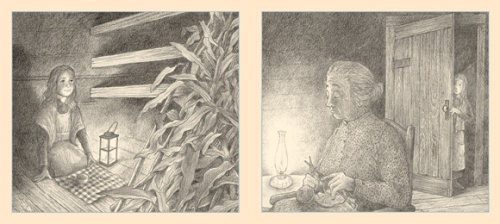Every so often I am contacted by someone, a student usually, who is working on a project and wants my input or advice. A few months ago, I got another such request.
The subject line was “small favor…”
Margaret,
I was wondering if you might be able to help me. I’m an illustration major at Brigham Young University and I’m taking a Business Practices for Illustrators class. For that class we’ve been asked to contact an illustrator whose work we admire and who we consider to be a successful illustrator and interview them (either through e-mail or on the phone, whatever works best for you) about their techniques and get their thoughts about the business side of illustrating and how the illustration business has changed in the last few years in particular. This would only be shared with the class, it wouldn’t be published on the internet. Does that sound like something you might be able to help me with? I completely understand if you’re too busy, please just let me know.
Thank you for your time,
. . . . .
In spite of the fact that one should never assume that any favor being requested is “small,” (though I’ve done the same myself – don’t we all wish that the favors we ask of others not be perceived as big?), the articulate and complimentary prose won me over. When I was in college my university didn’t even have an illustration department, much less practical instruction for making a living in the arts. I could have learned a thing or two the easy way if it had.
The questions the student asked were broad but insightful. I tried to answer them as succinctly as possible. I’m including the interview here to perhaps inform others looking for input on the same topics. Disclaimer: I am not an expert, I’m just speaking from my own, personal experience. And this was my opinion a few months ago. My ideas might be quite different in another year! Feel free to let us know what answers you might have given if asked the same small favor!
Q: From your point of view, how has the illustration industry changed in the last decade or so (if at all)?
A: It changed significantly in the ’90s due to the proliferation of online stock images for sale. The effect of technology advances has made it easier for non-illustrators to create images using software like Photoshop and Illustrator. It also has changed the style of illustration, as technology has made some techniques possible that would have been too difficult to produce manually. The market has gotten narrower. Fees have gone down or stayed stagnant for many. Clients expect quick turn-around, with availability 24/7.
Q: What do you do differently now than then?
A: I don’t work as a commercial illustrator much anymore. I have focused on children’s books, so I am not really active in the market these days. Children’s books are a smaller arena on which to focus.
Q: What do you see happening to the industry in the next decade?
A: Things will continue to tighten, I imagine. It will be harder for illustrators to keep rights when negotiating. Clients will want more for less.
Q: It seems that currently digital media is taking over, yet from what I’ve seen you have stuck with traditional mediums and methods in your work. Has the abundance of digital media affected the way you work much at all? What do you see as the advantages or disadvantages of digital versus traditional media?
A: I am a printmaker, working mostly with relief printing methods. I do use software to make alterations to images after I have completed them, but only to fix flaws or assemble pieces that would have been too hard to create manually (such as placing very small figures in a full spread – in that instance I might create the art for the figures separately at a larger scale so that I can get the detail in, and then digitally reduce them and place them into a scan of the background image afterwards). The ability to fix things after the fact has removed some of the stress of making images for books. For example, if a glob of ink gets on an image as I’m printing something, I don’t necessary have to print the whole thing over again, I can make the repair in Photoshop. Also, if the editor requests a change to an image after I’ve turned in all the artwork (a situation I always try to avoid) I can make the change and alter the finished art digitally and not have to reprint the entire piece.
One down-side to technology that I’m aware of these days is that artists who create digital images can work much faster than I can. Some art directors and editors have come to expect that.On the other hand, digital art often lacks evidence of the artist’s hand. There is too much control of the medium. It’s too easy to be slick. There is no opportunity for happy accidents which is why I like the process of making my art by hand.
I am an old-school craftsperson at heart. I enjoy getting my hands dirty, and doing computer graphics requires too much time sitting on one’s butt staring at a screen. That’s not my style.
Q: What advice do you have for new illustrators just starting in the industry?
A: Be assertive. Don’t let a fear of failure keep you from trying. Look for inspiration everywhere. Don’t look at your competition for inspiration.
Always work with a contract. Don’t do “work-for-hire.” Keep the rights to your artwork unless the client is willing to pay substantially for a total buy-out and unlimited usage. Run your business like a business. Be polite but be strong.






















